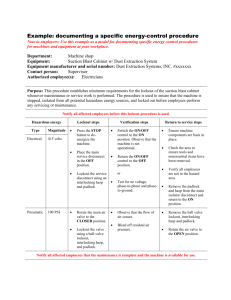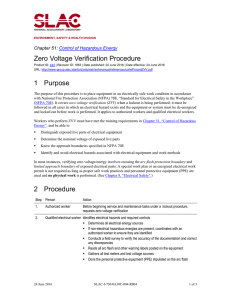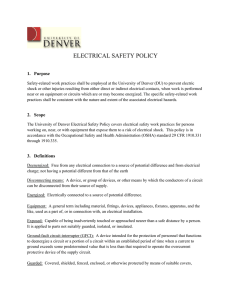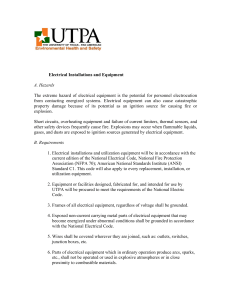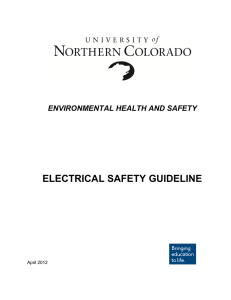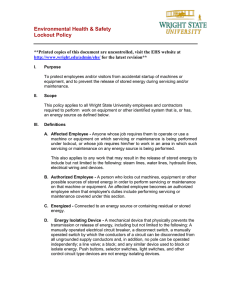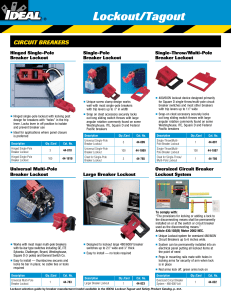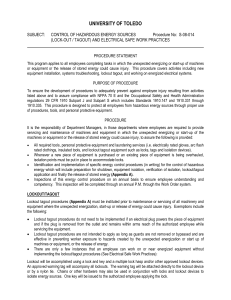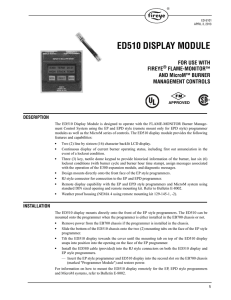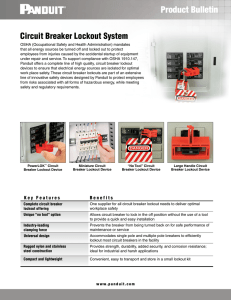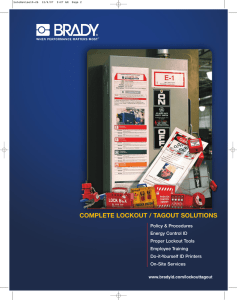University Facilities Hazard Control Procedure Clear Form Print
advertisement
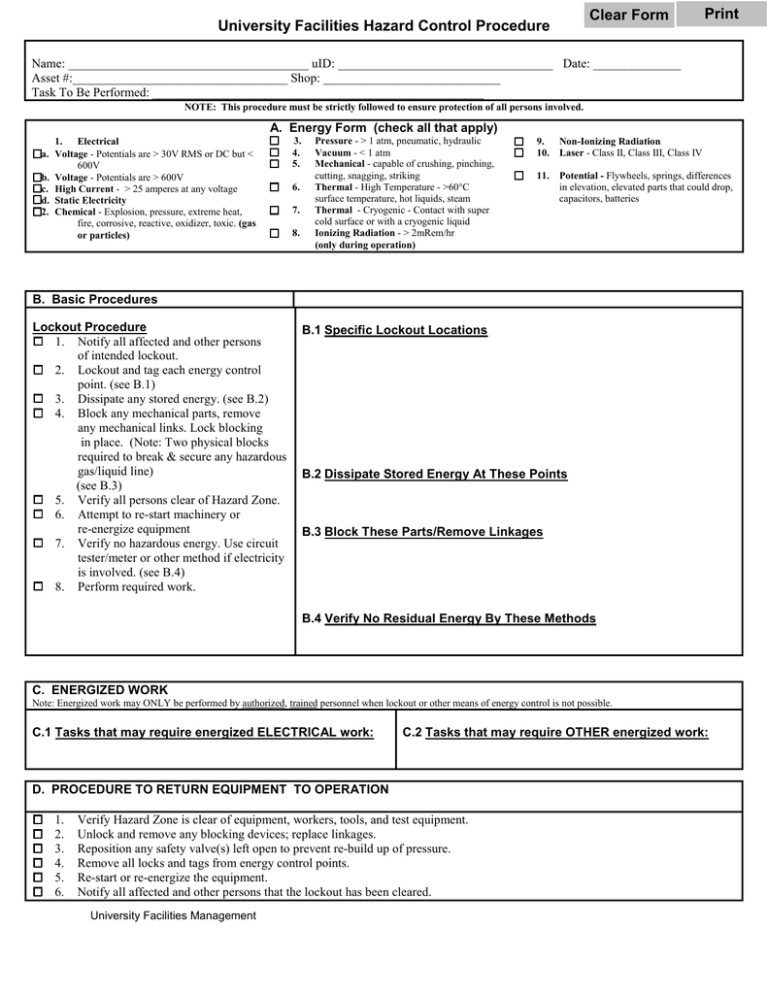
University Facilities Hazard Control Procedure Clear Form Print Name: ______________________________________ uID: __________________________________ Date: ______________ Asset #:__________________________________ Shop: ____________________________ Task To Be Performed: _____________________________________________________ NOTE: This procedure must be strictly followed to ensure protection of all persons involved. A. Energy Form (check all that apply) a. b. c. d. 2. 1. Electrical Voltage - Potentials are > 30V RMS or DC but < 600V Voltage - Potentials are > 600V High Current - > 25 amperes at any voltage Static Electricity Chemical - Explosion, pressure, extreme heat, fire, corrosive, reactive, oxidizer, toxic. (gas or particles) 3. 4. 5. 6. 7. 8. Pressure - > 1 atm, pneumatic, hydraulic Vacuum - < 1 atm Mechanical - capable of crushing, pinching, cutting, snagging, striking Thermal - High Temperature - >60°C surface temperature, hot liquids, steam Thermal - Cryogenic - Contact with super cold surface or with a cryogenic liquid Ionizing Radiation - > 2mRem/hr (only during operation) 9. Non-Ionizing Radiation 10. Laser - Class II, Class III, Class IV 11. Potential - Flywheels, springs, differences in elevation, elevated parts that could drop, capacitors, batteries B. Basic Procedures Lockout Procedure 1. Notify all affected and other persons of intended lockout. 2. Lockout and tag each energy control point. (see B.1) 3. Dissipate any stored energy. (see B.2) 4. Block any mechanical parts, remove any mechanical links. Lock blocking in place. (Note: Two physical blocks required to break & secure any hazardous gas/liquid line) (see B.3) 5. Verify all persons clear of Hazard Zone. 6. Attempt to re-start machinery or re-energize equipment 7. Verify no hazardous energy. Use circuit tester/meter or other method if electricity is involved. (see B.4) 8. Perform required work. B.1 Specific Lockout Locations B.2 Dissipate Stored Energy At These Points B.3 Block These Parts/Remove Linkages B.4 Verify No Residual Energy By These Methods C. ENERGIZED WORK Note: Energized work may ONLY be performed by authorized, trained personnel when lockout or other means of energy control is not possible. C.1 Tasks that may require energized ELECTRICAL work: C.2 Tasks that may require OTHER energized work: D. PROCEDURE TO RETURN EQUIPMENT TO OPERATION 1. 2. 3. 4. 5. 6. Verify Hazard Zone is clear of equipment, workers, tools, and test equipment. Unlock and remove any blocking devices; replace linkages. Reposition any safety valve(s) left open to prevent re-build up of pressure. Remove all locks and tags from energy control points. Re-start or re-energize the equipment. Notify all affected and other persons that the lockout has been cleared. University Facilities Management

